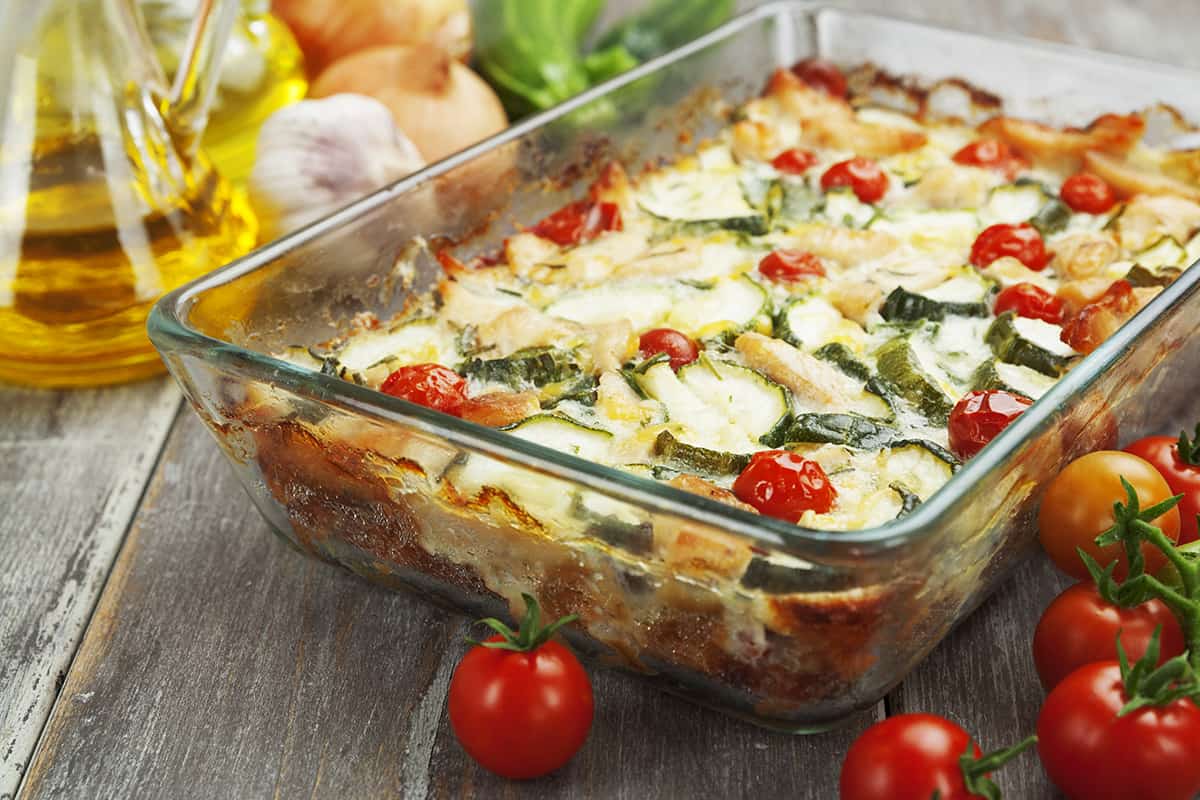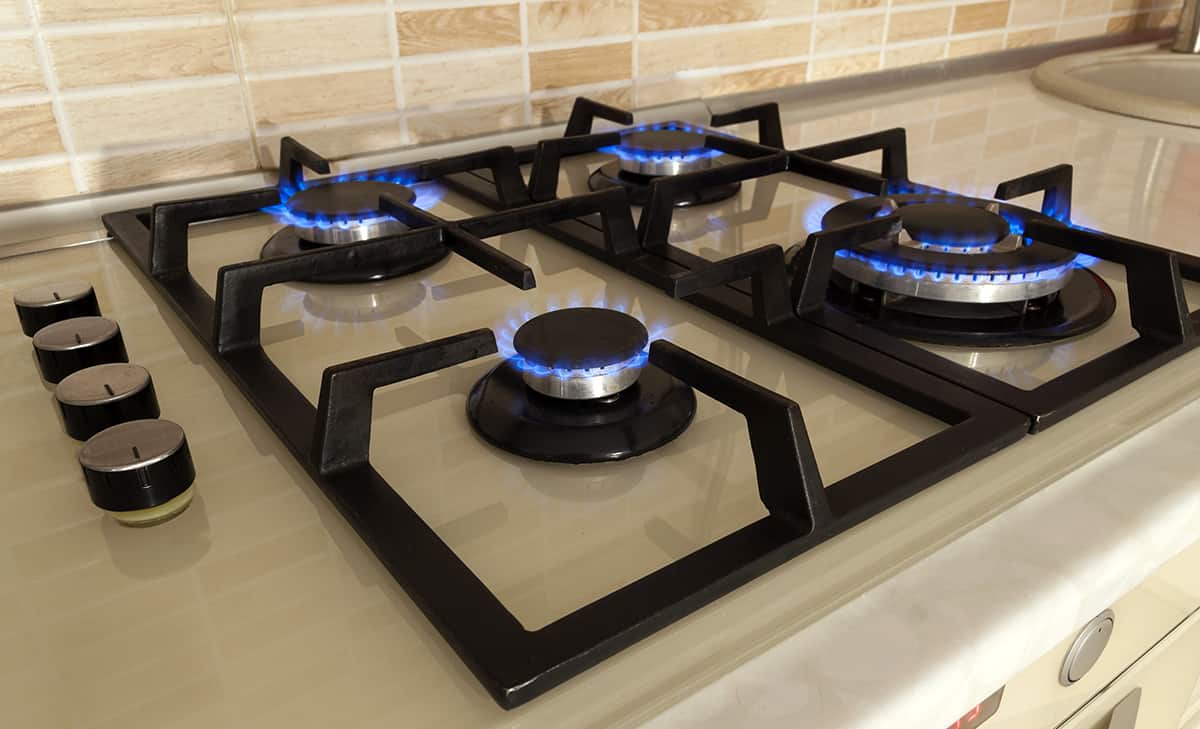Pyrex is a brand that is synonymous with tempered glass kitchen tools and bakeware. If you have a glass casserole dish in your cabinets, there’s a good chance it has the infamous red Pyrex logo on it. But if Pyrex is safe to use in an oven, surely, it should be safe to use on a stovetop, right?
Despite being tempered, Pyrex and other glass bakeware brands are not safe to use for cooking on a stove, inside a barbecue pit, or even underneath a broiler. Glass bakeware and cookware is susceptible to thermal shock—i.e., it can shatter due to sudden changes in temperature.
In this guide, I’ll explain what Pyrex is, why you shouldn’t place it on a stovetop, and how to use Pyrex safely.
What Is Pyrex?

When anyone mentions Pyrex, they’re most likely talking about measuring cups or casserole dishes. In reality, Pyrex is a brand that makes glassware for all sorts of applications, the most famous of which are cooking and baking.
What separates Pyrex from regular glassware and glass objects is the tempering process. Glass tempering is a process in which glass is heated up to extreme temperatures to increase durability.
This happens when the center of the glass pulls away from the heated exterior, causing the center to tighten up and become up to 5 times more durable than non-tempered glass. For a more comprehensive explanation of the tempering process, I highly recommend giving this short guide a read.
Essentially, Pyrex, which is a specific brand of tempered glass, is a lot more durable than the type of glass used for windows, vases, and other household objects. And as a brand of cookware, you can rest assured that it can withstand the extreme temperatures in an oven!
Can Pyrex Be Used on the Stovetop?
However, cooking with Pyrex on a stovetop is a completely different story.
According to The Camlab People, Pyrex can withstand temperatures of between -192° and 500°C (-313.6 and 932°F). Now, that’s pretty extraordinary, but Pyrex cookware and bakewares usually have a temperature limit of 450°F—sometimes even up to 600°F and higher!
Now, what does this mean, precisely? Basically, Pyrex is unsuitable for cooking directly on a stovetop. The open flames of a gas stovetop can reach over 3,500°F, whereas electric stovetops are slight “cooler” at 1,600°F. And no, you cannot use Pyrex to cook in an induction oven since it is not made of a magnetic material.
The good news is that Pyrex can withstand the heat of an oven since they are usually limited to around 500°F. That said, you should probably consider using another container when broiling dishes since broilers can reach temperatures of up to 700°F. In addition, you should not place Pyrex cookware inside BBQ pits or a campfire.
How to Use Pyrex Safely

Although Pyrex is mightily durable, at least when compared to regular, non-tempered glass, there are a few things you should know about using Pyrex to keep it from shattering in your hands.
1. Do not transfer Pyrex bakeware from the fridge directly to the oven (and vice versa)
In regular terms, thermal shock refers to the rapid cooling and heating of an object and how it can withstand a sudden change in temperature. Tempered glass, unfortunately, does not have a very high thermal shock threshold, despite its super-wide temperature tolerance of between -192° and 500°C.
So, if you want to firm up your cookie dough balls in the fridge and transfer them directly to your oven, make sure you don’t place the dough on a Pyrex dish. When a Pyrex dish heats up and cools down (or vice versa) too quickly, there’s a real risk that it will shatter. The silver lining is that Pyrex doesn’t shatter into a million pieces—only hundreds of thousands of pieces, probably.
2. Do not microwave Pyrex
Some Pyrex products might sport a microwave-safe label, but most of them do not. To be safe, if you can’t find the microwave-safe label on your Pyrex dish, keep it away from a microwave at all costs.
Microwaves work differently from stoves and ovens. They do not emit direct heat, but rather, microwaves emit microwave radiation that rapidly heats up the moisture in food. And as we already learned, rapid heating and cooling is not Pyrex-safe.
3. Allow the Pyrex dish to come to room temperature before washing
The unfortunate reality is that Pyrex is not non-stick. You will have to line the dish with parchment paper, aluminum foil, or Pam spray. So, you might feel tempted to soak your Pyrex dish in the sink and wait for the next day to scrub the debris away.
Before you do this, allow the dish to come to room temperature. The water from your faucet will cause unnecessary thermal strain to the tempered glass, increasing the risk of it shattering right before your very eyes.
4. Do not use cracked Pyrex dishes
Although Pyrex can be several times more durable than non-tempered glass, that doesn’t mean it won’t shatter when dropped or bumped against another object. It just means that Pyrex dishes can go through much more punishment before they begin to show signs of wear.
However, if you notice even the tiniest crack on your Pyrex dish, replace it immediately. A tiny crack in tempered glass is an invitation for heat to penetrate its surface and ruin the tension of the glass in the center of the dish. Basically, the crack will only increase over time.
5. Pyrex is dishwasher-safe
Although dishwashers expose your dishes to cool and hot water, Pyrex can withstand the slight shift in temperatures inside dishwashers. So, if you don’t feel like scrubbing your Pyrex dish, please feel free to place it on the bottom dishrack in your dishwasher and let the machine do the hard work for you.
If you feel like washing your Pyrex dishes by hand (I suggest doing this), then use the soft side of your sponge. Allow it to soak overnight to soften and dislodge caked-on debris.






